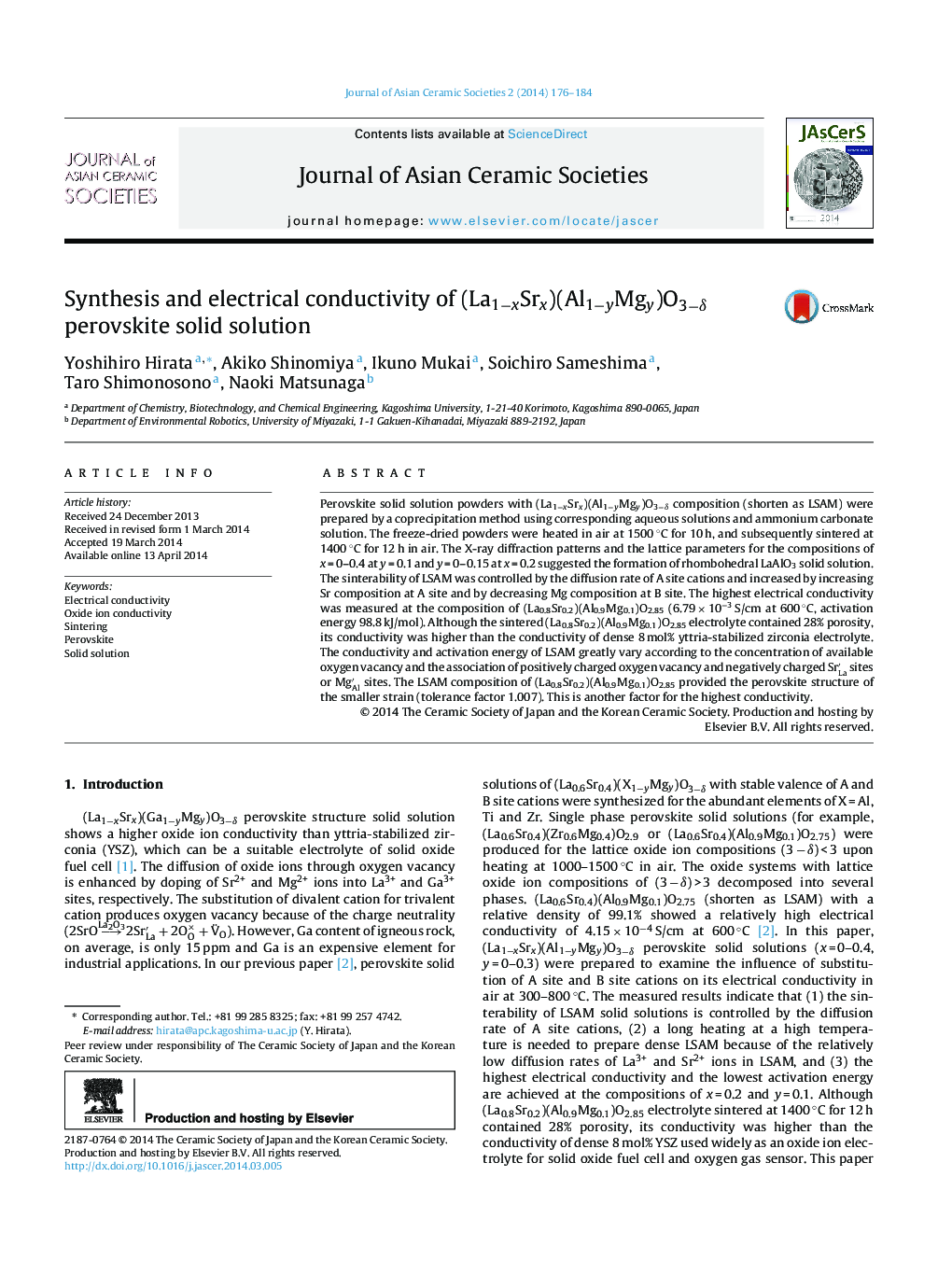| Article ID | Journal | Published Year | Pages | File Type |
|---|---|---|---|---|
| 1473398 | Journal of Asian Ceramic Societies | 2014 | 9 Pages |
Perovskite solid solution powders with (La1−xSrx)(Al1−yMgy)O3−δ composition (shorten as LSAM) were prepared by a coprecipitation method using corresponding aqueous solutions and ammonium carbonate solution. The freeze-dried powders were heated in air at 1500 °C for 10 h, and subsequently sintered at 1400 °C for 12 h in air. The X-ray diffraction patterns and the lattice parameters for the compositions of x = 0–0.4 at y = 0.1 and y = 0–0.15 at x = 0.2 suggested the formation of rhombohedral LaAlO3 solid solution. The sinterability of LSAM was controlled by the diffusion rate of A site cations and increased by increasing Sr composition at A site and by decreasing Mg composition at B site. The highest electrical conductivity was measured at the composition of (La0.8Sr0.2)(Al0.9Mg0.1)O2.85 (6.79 × 10−3 S/cm at 600 °C, activation energy 98.8 kJ/mol). Although the sintered (La0.8Sr0.2)(Al0.9Mg0.1)O2.85 electrolyte contained 28% porosity, its conductivity was higher than the conductivity of dense 8 mol% yttria-stabilized zirconia electrolyte. The conductivity and activation energy of LSAM greatly vary according to the concentration of available oxygen vacancy and the association of positively charged oxygen vacancy and negatively charged Sr′LaSr′La sites or Mg′AlMg′Al sites. The LSAM composition of (La0.8Sr0.2)(Al0.9Mg0.1)O2.85 provided the perovskite structure of the smaller strain (tolerance factor 1.007). This is another factor for the highest conductivity.
